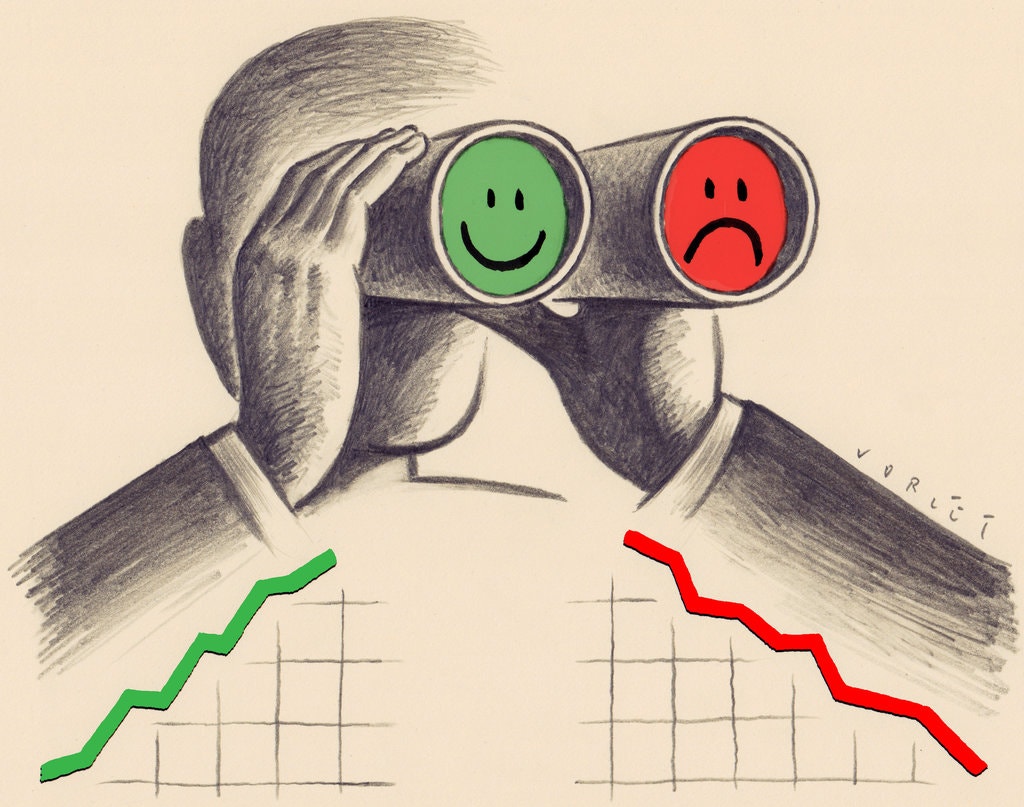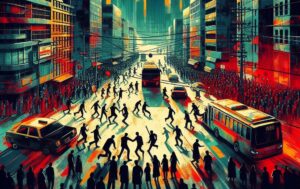
THE slowdown in the economy induced by the surge of the COVID-19 outbreak has undoubtedly been heavily incident on the relatively poorer population that has barely anything to fall back on. As hopes of flattening the novel coronavirus infection curve in the near future diminish, it is not solely the poor who are in misfortune. Households in the middle- and lower middle- class tiers also face rapidly eroding incomes. Vast informal sectors are struggling to survive. The formal private sector is slaying through furlough and income and job cuts. Women, home-makers and job-holders alike, are submerged in increased work burden. Prospects of the youth are in jeopardy. More and more households spiral into uncertainty of securing the next meal as anxieties and sufferings only escalate each day, with the prolonging of the outbreak.
Lives, livelihood of many in peril
AS THE control over life diminishes, reinforced by measures of physical distancing and the halting of non-essential economic and social activities, the prevailing uncertainty aggravates manifold. The pandemic has not only been centred on the contagion of the virus, but also by widespread anxieties of people regarding their chances of survival and insecurities regarding food, income and standards of living. As a large part of the population is dependent on daily wages to run family, drastic measures such as lockdown lead to even greater disasters at the household level. A recent survey of 5,461 households in rural and urban slums found that their average income decreased by about 70 per cent and food expenditure by 26 per cent, as BRAC and the PPRC estimate.
The outbreak and the economic slowdown it has caused have affected not only informal sector employees, but those in the formal sector too. Assuming that the richest and poorest constitute around 20 and 20 per cent of the population respectively, the middle class constitutes around 60 per cent of the population. Around 51.6 per cent of the lower middle class is employed in the private sector and 17 per cent is involved in entrepreneurial roles. Workers involved in the industrial and technical sector have faced a 28.4 per cent decrease in their salary. Services sector workers have lost their salary by 31.2 per cent. Amidst the outbreak, the poor have fallen down the rungs to being extreme poor, the middle class to lower middle class, and the lower middle class to poor.
Escalation in joblessness, poverty and inequality
UNNAYAN Onneshan estimates that the fall in economic growth will result in unemployment rising by more than 3 percentage points for the first time in 35 years. The rate of poverty is likely to worsen by more than double, depending on the speed of the recovery. The outbreak has severely impacted the life and livelihood of the marginalised section of society — particularly the low-income people, women, children, the elderly, the unemployed, informal sector workers, lower middle-class and middle-class groups. Income erosion resulting from losses in various sectors from the shutdown will create a new class of poor. In the absence of prudent policy intervention, around 43.5 per cent of household incomes will soon be below the poverty line and in case the economic slowdown is prolonged, the figure may even rise to 47.43 per cent. The rate of poverty will exhibit an upward movement for the first time since 1992.
Novel coronavirus has also exposed the deep divide in society. Income cuts disproportionately affects those living in mediocre standards of living and the extraction of liquidity from the powerful elite being neglected as a source of revenue is likely to worsen the pre-existing income inequality. Inequality is mounting and is expected to cross the fault line of 0.5 in the Gini coefficient if a universal social security is not instituted. The real wage growth is at its lowest in five years. Individuals in urban and rural areas are likely to face an income erosion of 75 per cent and 62 per cent respectively, implying that around seven crore people will be unemployed and be living below the poverty line, according to estimates released by BRAC and the PPRC.
Formal, private sector in adversity
AROUND nine million people are employed in the formal sector. Out of them, only 1.5 million work in government jobs; the other 7.5 million work in the private sector. Many private firms, however, have not paid out salary to their employees during general holiday that the government ordered. Some have paid out only 30 to 40 per cent of the salary, with no provision for Eid allowances. Services sector incomes have decreased by 31.2 per cent. The income of those in the transport sector has diminished by 46.3 per cent whilst that of household services workers has dwindled by 16.5 per cent. Workers of 350 apparel facories have lost their job. Around 2.2 million wage labourers are now facing unemployment.
Earnings of state-owned, commercial and multinational banks have decreased by 66 per cent because of the economic shutdown. The salary of employees is curtailed to keep expenditure in check whilst many employees remain at the brink of being laid off. While most citizens are already suppressed under the colossal burden of unemployment, the government has shut down 25 publicly-owned jute mills, leading to a further 25,000 permanent personnel facing unemployment. Most private universities pay out salaries of teachers and staff only partially, or often none. Economic adversities have forced people to advertise the sales of private educational institutions in different regions, leaving thousands of teachers, students and guardians in gross uncertainty.
Informal sector in jeopardy
MORE than 86 per cent, or around 60 million, of people are employed in the informal sector, as the Bangladesh Bureau of Statistics estimates, contributing to 40 per cent of the gross domestic product. The informal agricultural sector employs more than 23.8 million workers. Simultaneously, industry and services sectors employ 11.1 million and 17 million labourers respectively. These workers often live hand-to-mouth, without any savings to fall back on. At the same time, they remain deprived of the minimum wage jurisdiction and benefits laid out by the labour laws.
It is evident that two out of three private-sector employees are involved in micro, cottage, small and medium enterprises. According to a BIDS survey, 25 per cent of the GDP is contributed by this sector. Around 86 per cent of the employment generated by the industry is in this sector, amounting to one crore employees. More than 52 per cent of enterprises in this sector, however, have been compelled to close down whilst 28 per cent of the enterprises have had their revenue halved. Because of stringent conditions laid out for availing stimulus packages, small and medium enterprises have been unable to swiftly draw loans from the banking sector.
In the agriculture sector, 46 per cent of the fishermen have been forced to resort to taking loans at high rates of interest because of an extreme shortage of food. BRAC estimates that in just one and a half months of the infliction of the outbreak, crop and fisheries have suffered losses of Tk 150 billion and Tk 390 billion, which amount to a loss of around Tk 207,000 a farmer.
The youth in trouble
THE International Labour Organisation estimates that 27.39 per cent of the youth population had not been in employment, education or training before the outbreak. In the aftermath, the scope of income generating activities has thinned down for the youth. There is a large number of students who bear their own expenses from tutoring. The outbreak has left them out of work. Many worked part-time in informal roles in event management, photography, tourist guides and so on, which have been halted because of the COVOD-19 outbreak. Activities have also been brought to a standstill in the sports and cultural sphere. As a result, the youth and their families have encountered grave insecurities.
The youth are staring ahead into a chasm of lost opportunities as organisations scale down their operations and unwilling to hire new employees. A mechanism for incentivising these firms to hire someone under the age of 29 may be put in place by introducing a government-financed financial incentive scheme. These financial incentives could then be provided to the firms each time they hired an employee from the youth population, thus contributing to curbing the youth unemployment that is expected to be grossly exacerbated in the post-COVID-19 era.
Miseries of women, elderly and children
WOMEN constitute a half of the population. The size of the ageing population is expected to rise to 12 million. Those aged between zero and 25 years account for 60 per cent of the population. Any calamity affects the women, children, the elderly and children with special needs of society in a proportionally worse manner. People have suffered emotionally and psychologically from bearing the brunt of anxieties, uncertainties and risks from the contraction of the economy that has affected their personal well-being, family and social life. Income erosion has made it quite impossible to fulfil the basic needs of the elderly and children.
Although women are entitled to receive 15 per cent of the SME loans, it does not appear to be the case. Allocation for women, children and elderly in the social security remains largely insufficient compared with the size of the population. Women are experiencing a time burden along with the physical and psychological burden during the current outbreak. Home-makers and caregivers who are not engaged in institutional occupations outside home are experiencing more work pressure because of the constant presence of all the family members at home, resulting in an increase in domestic works. Development practitioners reported an escalation in child marriage mainly because of financial uncertainties and the closure of educational institutions. Hostility and violence have intensified whilst the social code of conduct is threatened to collapse. Violence towards women and children has worsened by 65 per cent where 98 percent of the women living in slums have been suffering from domestic violence.
Return of millions of migrants
BOTH internal and external migrant workers of Bangladesh encounter serious social, economic, political as well as psychological adversities amidst the outbreak. The story of progress in Bangladesh was driven by the migration of rural workers to urban areas and domestic workers across international borders in search of employment. Some 50,000 of rural-urban migrants have, meanwhile, left the city. Many of them have, however, failed to receive government relief packages because e of their staying away from villages for a long period of time.
On the other hand, 200,000 migrant workers have returned from abroad. Millions of other migrant workers are waiting to return home unemployed. However, there will not be any employment opportunities for them at home right away. The number of unemployed individuals in rural areas is around 7.7 million, which is expected to increase when those in disguised unemployment and those newly unemployed are added to the equation. As the destination countries have imposed shutdown and travel bans, workers returned to their home countries strewn into extreme uncertainties. The global economic downturn has placed their job security in peril, hampering future earning potential. Furthermore, they have fallen victim to stigmatisation as being ‘virus carriers’ and have often been the centre of paranoia for their communities.
Crisis of tenants and house owners
TENANTS find themselves unable to pay their rent. House-owners are also in a crisis as most tenants are leaving. In most cases, loans were taken from leasing companies outside the banking sector where the interest rate was around 12 to 16 per cent. Home-owners are now unable to repay their loans, and are struggling to bear household expenses. They will not be able to reduce the rent unless interest payment is temporarily called off or a lump sum allocation is given for providing them with financial assistance.
Flooding and inflation in prices
THE present situation has been described as one of the worst cases of flooding and water stagnation in a decade as almost a third of the country may be inundated, affecting more than 1.5 million. It is feared to affect people in 23 districts, according to the disaster management and relief ministry. Three hundred and fifty thousand people in 14 districts are stranded by floods. Around 1.4 million people in flood-affected areas have suffered destruction of homesteads and crops. Houses and various structures have been engulfed by river erosion caused by floods. Dams lay destructed.
This, coupled with a crunch in the market for essential goods that is driving prices of basic necessities skyrocketing, is likely to deteriorate the chances of survival and sustenance of the affected population. Inflation has exceeded 6 per cent in June alone.
Conventional targeted social security measures
Women, the elderly and marginalised communities are evincing to be the most vulnerable to both the outbreak and the economic costs of an ongoing shutdown as the infection spreads across Bangladesh. As these communities are dependent on informal employment and because most of them are in poor and crowded living conditions which make social distancing and access to sanitation exceedingly strenuous, they are distinctly vulnerable to the new coronavirus infection. The government has announced Tk 321.66 billion in the budget for the 2021 financial year for social security purposes. This accounts for a real change of only 2.5 per cent as compared with the budget of the previous financial year.
The existing social security programmes are certainly not adequate. Once pension and interests on savings certificates are subtracted, the allocation for the 2019–20 financial year, indeed, decreased from 9 per cent to 7.6 per cent. As many as 3.4 million out of the 5 million that the government promised to provide financial assistance are yet to receive it. Mismanagement is difficult to be put under a leash even under the supervision of senior officials in the administration. This is because the measures are not universal, but rather centred on specific groups or parties. In most cases, the determination of beneficiaries is politically biased. For a population set back by unequal access, a well-rounded social security will have long-term, multiplied; benefits, for instance, the provision of a child benefit will improve nutrition levels and lower fertility rates that eases up more of the household income to be spent on the child. The chances of nurturing a skilled and productive work force are thereby enhanced by leaps and bounds.
Rebooting economy through universal basic income
APPROXIMATELY 70 per cent of the total tax revenue is sourced from indirect taxes, of which 39 per cent is sourced from value-added tax. It implies that the lion’s share of the tax revenue is extracted from the average hard-working citizen. Therefore, money should be given out in cash transfers, disbursed till December to help them to cope through the crisis. Emergency accounts should be opened using national identification cards to make the transfers. A monthly basic income grant of Tk 4, 845 should be sent out as per the international poverty line income of $1.90 a day to stave off people sliding down to become new poor. Payroll data collected from the National Board of Revenue can be used to include employees in the formal sector, apart from government officials. This should be followed by a mission-driven scheme of protecting job, involving fiscal incentives and creating jobs, encompassing investment in infrastructure, green recovery and rural economy generation.
The COVID-19 outbreak has triggered a swelling of fiscal incentives worldwide as governments emphasise paying out fiscal support to the people that has, however, also worsened the public debt situation for countries. The International Monetary Fund has advocated the continuation of financial support provision for people, prioritising it over the public debt deterioration. Despite having a debt-to-GDP ratio of 73.8 and 83.35 per cent respectively, India and Pakistan have disbursed cash transfers to assist the general public. In comparison, Bangladesh has a debt-to-GDP ratio of only 33 per cent. There is no better alternative to cash transfers to ensure the protection of lives and the preservation of social stability whilst rebooting the economy.
Published in Newage





